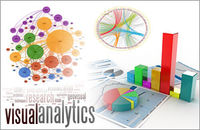Difference between revisions of "Lesson02"
| (5 intermediate revisions by the same user not shown) | |||
| Line 31: | Line 31: | ||
<font size =5>'''Designing Graphs to Enlighten: Principles, Methods and Best Practices'''</font> | <font size =5>'''Designing Graphs to Enlighten: Principles, Methods and Best Practices'''</font> | ||
| − | <font size = 3>[[media:Lesson02.pdf|Lesson 2 Slides]]</font> | + | <font size = 3>[[media:Lesson02.pdf|Lesson 2 Slides]]</font> or [http://slides.com/tskam/is428-lesson02 web version] |
== Content == | == Content == | ||
| Line 113: | Line 113: | ||
Getting Started with Visual Analytics [http://www.tableau.com/learn/tutorials/on-demand/getting-started-visual-analytics] | Getting Started with Visual Analytics [http://www.tableau.com/learn/tutorials/on-demand/getting-started-visual-analytics] | ||
| + | Pareto Chart [http://www.tableau.com/learn/tutorials/on-demand/pareto-charts] | ||
| + | Do More with Bar Charts in Tableau 10 [http://www.tableau.com/about/blog/2016/6/mark-sizing-tableau-10-56014] | ||
| + | |||
| + | Boxplot [http://www.tableau.com/learn/tutorials/on-demand/box-plots] | ||
| + | |||
| + | Histogram [http://www.tableau.com/learn/tutorials/on-demand/histograms] | ||
|- | |- | ||
Latest revision as of 11:58, 22 August 2016
|
|
|
|
|
|
Designing Graphs to Enlighten: Principles, Methods and Best Practices
Lesson 2 Slides or web version
Content
Data Foundation
- Types of data
- Structure within and between records
- Data preprocessing: ETL (Extract, Transform, and Loading)
Human Perception and Information Processing
- What Is Perception?
- Physiology
- Perceptual Processing
- Perception in Visualization
- Metrics
Perceptual and Design Principles for Effective Visual Analytics
- System, Color, Gestalt Laws, Pre-attentive processing
- Representation: The encoding of value and relation
- Visual Perception and Quantitative Communication
Designing Charts to Enlighten
- What we mean by an enlighten graph
- JunkCharts: Understand the limitation of Excel charts
- Principles of Graphic Design
- Semiology of graphics
Useful Charts for Data Discovery
- Data discovery with bar chart
- Data discovery with histogram
- Data discovery with boxplot
- Data discovery with dotplot
Hands-on Session
- Visualising and analysing bivariate data
- Interactive visual analytics with Graph Builder
Daily Readings
| Day | Time required | Readings |
| Day 1 | 60 mins |
Eight Principles of Data Visualization [1] The Dataviz Design Process: 7 Steps for Beginners [2] |
| Day 2 | 60 mins |
Tapping the Power of Visual Perception [3] Quantitative Literacy Across the Curriculum [4] |
| Day 3 | 60 mins | Best Practices for Understanding Quantitative Data [5]
Data Visualization: Rules for Encoding Values in Graph [6] Sometimes We Must Raise Our Voices [7] |
| Day 4 | 60 mins |
Choosing Colors for Data Visualization [8] Line Graphs and Irregular Intervals: An Incompatible Partnership [9] 7 Basic Rules for Making Charts and Graphs [10] |
| Day 5 | 3 hours | Hands-on exercise: Exploring Tableau
Getting Started with Visual Analytics [11] Pareto Chart [12] Do More with Bar Charts in Tableau 10 [13] Boxplot [14] Histogram [15] |
References
Robbins, Naomi B. (2005) Creating More Effective Graphs, John Wiley & Sons, New Jersey, USA.
Edward R. Tufte (2001) The Visual Display of Quantitative Information (2nd Edition), Graphics press, Connecticut, USA. Chapter 4-9
Stephen Few (2004) Show Me the Numbers: Designing Tables and Graphs to Englighten, Analytical Press, Oakland, USA.
Wong, Dona M. (2010) The Wall Street Journal Guide to Information Graphics, W. W. Norton & Company, Inc. New York.
